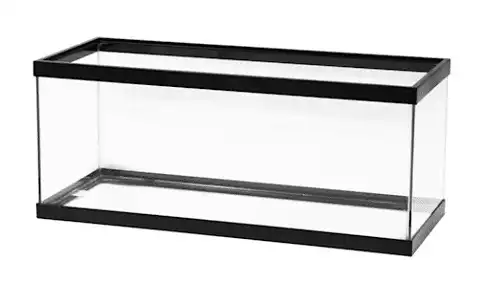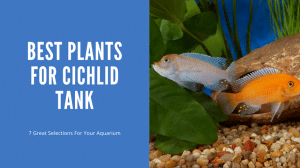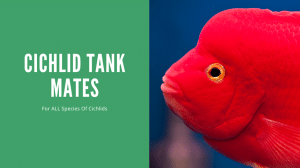Thank you for visiting! By the way… any links on this page that lead to products on Amazon and other stores/partners are affiliate links Aquarium Store Depot earns a commission if you make a purchase.
So you love Betta but wonder if you can keep a Betta in Community Tanks. After all, what’s better than a betta fish in a tank than having one in a thriving community tank?
Are you ready to unlock the full potential of your betta fish and create a vibrant, lively underwater world where they can get along with other fish species? With some knowledge and planning, it is achievable! Let us look into the secrets to keeping successful bettas in community tanks.
Key Takeaways
- Create a betta-friendly community tank with plenty of hiding spots and decorations.
- Monitor interactions between fish & maintain optimal water conditions for stress-free living.
- Choose compatible tank mates, such as neon tetras or snails, to coexist peacefully in your betta community tank!
Creating A Friendly Aquarium (With A Betta In Community Tanks)
When setting up a betta community tank, creating an environment that meets the needs of Siamese fighting fish and potential tank mates is essential. It necessitates thinking about aspects like size, decorations, and water conditions in order to make sure both bettas (called siamese fighting fish) and other tropical fish can cohabit peacefully.
Careful deliberation must be exercised when opting for a particular type of betta or other species’ appropriate aquarium among all available varieties of tanks designed specifically for this purpose.
Tank Size Considerations
When talking about betta community tanks, tank size is a major factor. A 20-gallon aquarium offers plenty of space for the male betta and its potential companions to swim without feeling confined or threatened in their territories. While suitable males can be placed with your fish in smaller aquaria, it’s essential to research each fish species’ minimum tank requirements prior to introducing them into the same environment as your betta so they can all thrive comfortably within a single container. Planning ahead will ensure that everyone has enough room and help maintain balance within this type of ecosystem.
A classic 20 gallon aquarium in its 30 inch long variant. A very popular aquarium.
While we can go lower than 20 gallons, 20 gallons is our safest option. I have seen 10 gallon tanks work in the past, but you will limit your tank mates. Typically, having a larger school of fish or having social fish that can stand up for themselves while not bullying your Betta is your best option. A planted tank is also a better option than a fish only setup. This will often require going with a larger tank to have the best chance at success.
When selecting a 20 gallon fish tank, I recommend opting for a 20 gallon long instead of the standard. This puts the tank at longer than 24 inches. As we know from our Why Do Betta Fish Fight blog post, Betta fish are territorial and will establish space in that tank that will usually expand to 24 inches in length. With the 30 inches length of a 20 gallon long, you give everyone space to diffuse any possible aggression.
Decorations And Hiding Spots
It’s essential to create hiding spaces and decorations in a betta community tank if you want to reduce territorial tension among your fish. Design the aquarium with plenty of plants, rocks, driftwood, and other enclosures so that they can find security in their own territory, which will stop any conflicts or aggression from occurring.
Best Value
This hardy plant is super versatile. Can be placed anywhere in the aquarium and looks amazing when aquascaped
Adding aquatic plants along with shelter in decor not only gives them spots for refuge, but also heightens up the overall aesthetics of it. Should signs of quarrels between bettas and their companions be observed then separate compartments may need to be considered or possible removal of the Betta may need to happen. However, your chances of success are much higher with a well planted and scaped tank. For plants, we recommend the following:
Water Conditions And Quality
Creating a suitable habitat for bettas and their tank mates is imperative to having a successful community fish tank. Also known as the Siamese fighting fish, these animals require clean water with consistent parameters in order to remain healthy and free from stress. Having an efficient filtration system that can filter out unwanted particles is essential when managing all the inhabitants of your aquarium space.
It’s equally important to keep watch over other factors like temperature, pH levels, etc., ensuring they stay within boundaries. Temperature is our biggest challenge with Bettas as they do best in warm warmers of around 78 degrees. This may rule out several species of schooling fish that prefer cooler temperatures. They also prefer lower light, which will rule out plants that demand high light intensity unless you can design the tank to have low light area or use floating plants to diffuse the light.
You will also deal with lower flow. Bettas prefer lower flow and may not do well with fish that prefer higher flow.
How To Select The Proper Candidate

Selecting a Betta for a community tank is a process within itself and something I usually don’t see covered in other blogs and forums. In order to select the right Betta, we need to find the fish with the right temperament. The ideal fish is a more passive fish. Here are a few steps and pointers to follow for the best success:
- Females are, in general, less aggressive than males1
- Plakat Betta fish are generally more aggressive than other types of bettas
- When observing your fish, bring a mirror with you. Observe your betta candidate for 2-4 minutes. If the fish is flaring immediately and showing aggression, this is likely a more aggressive betta. The ones that do not interact as strongly are more passive
- Next, ask the pet store to feed the Betta. Sometimes, a more passive fish could be sick. We can mitigate some risk of illness if we can see the fish eat. If the fish eats and shows that it is passive, you have a good candidate for a community tank.
What Order Should You Introduce Them?
Due to the Betta fish’s territorial nature, it is best to introduce them last into a community tank. This means they will have no territory established to defend against their tank mates. If the Betta fish is first, I recommend that you remove the Betta fish and add the other tankmates into the tank. Place the betta fish back into the tank after a week. You can even take this a step further by rearranging the aquascape and removing the bubble nest prior to reintroducing your Betta fish back into the tank.
Tips For Introducing Bettas To A Community Tank
When introducing your bettas to their new community tank, make sure to acclimate them gradually and monitor how they interact with the other fish. It is important that all of the aquatic life in this environment have a stress free transition into living together – for everyone’s benefit! Thus, creating an ideal habitat setup beforehand as well as observing interactions between tank mates, are key steps when making a successful introduction.
Acclimating Your Fish
To ensure a stress free transition to the community tank, it’s best to gradually acclimate your betta. A recommended method is floating its old water in a clear bag within the new tank for around 30 minutes and slowly topping up with some of the community’s water during this time. This helps reduce shock from unfamiliar parameters or temperature changes while allowing them to get used to their environment more easily.
That’s the first step. There are two methods to introduce them after this:
- Using a breeder box
- Feeding the community fish while introducing the new betta
A breeder box allows you to please the Betta fish into the box so it can observe the new tankmates and they can do the same. This gives you a buffer from any aggression and lets you monitor interactions safely. My recommendation would be to keep your Betta in the breeder box for a week while under observation. Release the fish from the breeder box if the week observation period is successful.
This is my go to breeding box. Useful for breeding and for new fish introductions. It's been a mainstay whenever I introduce new fish to observe behavior.
The other other method is to feeding your community fish while introducing your betta. This involves a piece of food that is distracting to your fish like excessive food or using a wafer that sinks to the bottom. While your other fish feed on one side of the tank, you can introduce the Betta into the tank so it can safely swim and interact with your other fish. Fish that aren’t hungry tend not to be as aggressive, so this will give you a buffer.
Ideally, if you are patient enough, you can utilize both methods
Monitoring Interactions
Monitoring the interactions between your betta and their tank mates is important to identify any aggression or disputes that may occur. Pay special attention during meal times, as this can be a source of conflict for competing over food. If aggressive behaviors are observed, then swift action should be taken. Depending on the situation, it could mean separating individuals into different tanks with altered decor elements or completely removing them from each other’s presence altogether. Keeping an eye out allows issues not to worsen. Then, they have already been addressed accordingly.
Male vs. Female Aggression And Challenges
When thinking about putting bettas in a community tank, it’s important to be aware of the distinctions between males and females. Males have been known for their territorial behaviors and aggression while female bettas are usually friendly enough to live with other fish together.

A male’s presence when combining them into one habitat brings particular difficulties due to its nature, which must be kept in mind. Multiple female bettas can be kept, but these are best done in a betta sorority environment with females from the same breeding batch.
Male Challenges
The striking colors and fin movement of male bettas make them a beautiful addition to any community tank, but their aggressive behavior can be difficult for other fish species. Male betta tank mates should not look like them or be as colorful as them, as they may be seen as threats.
When looking for tank mates to add to a betta fish tank, female ones are usually more friendly with other species of fish. They have an inclination towards forming groups or “sororities” in larger fish tanks (30 gallons minimum), and because of this, they create an exciting atmosphere within the community tanks.
Fish that swim fast and stay together in schools are ideal companions, as well as bottom-dwellers like corydoras catfish; these would most likely not start any quarrel between them since they inhabit different parts of the environment. Be wary about adding fin nippers and bright colored creatures as female betta tank mates. They may bring stress to the females or threaten their safety due to competitive behavior.
Choosing Compatible Tank Mates
In order to create a harmonious community tank, suitable fish and non-fish tank mates should be chosen for the betta. It is essential that both their size and demeanor are taken into account before they can inhabit this type of environment alongside peaceful species of fish. Tank inhabitants, which provide additional benefits to the total ecosystem should also be considered in combination with these more passive varieties so it may remain balanced overall.
Peaceful Fish Species
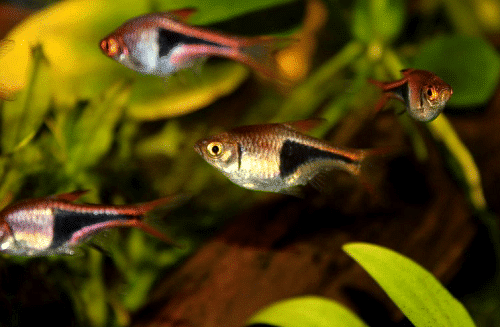
When it comes to finding betta fish tank mates, there are some peaceful fish species that coexist well with them in community tanks. These include neon tetras and rasboras (like the harlequin rasbora), along with zebra danios, Endler’s guppies, and corydoras catfish.
It’s advisable to stay away from brightly colored fish or fin nipping fish which can stir up trouble between the betta and other fish present in the same tank. Instead of these kinds of breeds, one should go for small fast swimming yet gentle creatures whose needs correlate with each others like dietary requirements or water parameters etc.
Kuhli loaches and bristlenose plecos make great companions, too, since they mainly dwell on the bottom where few resources have competition, thus lowering any chances of conflict among all sea life sharing a single habitat together!
Larger livebearers like platy fish and mollies are great candidates. These fish are generally carefree and big enough that even if the Betta shows aggression will not be a threat to the livebearer due to their size and numbers.
Looking for more in-depth info? Check out our video from our YouTube Channel about the best betta tank mates available.
Non-Fish Tank Mates
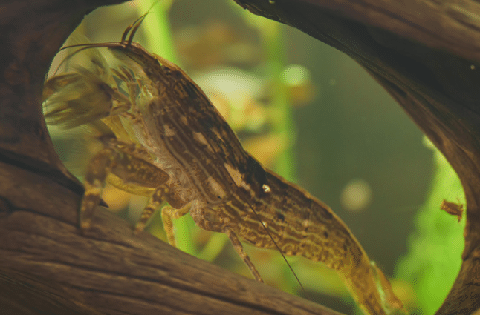
For a healthy and stimulating betta community tank, it’s important to include peaceful fish species. Consider adding some non-fish tank mates such as mystery snails and larger shrimp like bamboo shrimp, these creatures help keep the aquarium clean by eating algae and leftover food particles while also providing diversity in your aquatic world. It is paramount that you research each creature’s water parameters compatibility with both other inhabitants of the tank and ensure peace between them all for successful cohabitation within the same environment.
Frequently Asked Questions
Can a betta live in a community tank?
Having the appropriate aquarium, with compatible companions and ample plants, a betta can successfully exist in a community tank. A 20 gallon environment should provide enough cover for these tropical fish to cohabit peacefully. Through careful selection of betta tankmates as well as providing lots of greenery, this model could work for many aquarists looking into setting up a harmonious Betta Community Tank.
How big should a betta community tank be?
For betta fish, a 5-gallon tank is suggested as the ideal size if kept alone, and 10 gallons should be considered the minimum tank size when introducing other tank mates (with 20 gallons being recommended). This suggestion applies to anyone who wishes to house more a sole betta fish in their aquarium.
How can I create hiding spots for bettas and their tank mates in a community tank?
Adding plenty of aquarium plants, rocks, and ornaments to your tank will provide hiding spots for bettas and their fishcompanions, thus reducing the amount of stress as well as territorially-motivated behavior while creating a refuge for all inhabitants.
What are some peaceful fish species that can coexist with bettas in a community tank?
Endler’s guppies, platies, neon tetras, rasboras and zebra danios are some of the best tank mates for bettas as they are known for living in harmony with bettas in a shared community tank. Guppy fish are a bit riskier with fancy varieties.
How can I prevent aggression in my betta community tank?
For a peaceful environment in the betta community tank, it’s necessary to ensure ample hiding spots as well as an ideal set-up and design of the container. To achieve this, decorations like plants or rocks can be used to provide lots of places where fish can hide away from potential threats or conflicts with each other. Having sufficient space between inhabitants is essential. Longer tanks over 2 feet will diffuse aggression and keep fish well fed will also help.
Closing Thoughts
Setting up a thriving betta community tank can be both exciting and challenging. It is important to take into account the size of the tank, water conditions, as well as potential compatible fish species that could make for suitable tank mates in order to ensure harmony between all parties involved. Creating an environment where everyone can thrive requires patience and dedication, so you must have a full understanding of each fish’ needs before starting this project.
If done correctly, your underwater world will bring immense joy and beauty with its colorful array of diverse creatures. It truly is an amazing sight! With commitment comes reward, so plan carefully. Creating the perfect balance necessary for such tanks might require some trial and error, but once achieved, it provides worthwhile results every time!
- About the Author
- Latest Posts
I’m thrilled that you found Aquarium Store Depot! Here you’ll find information on fish, aquariums, and all things aquatics related. I’m a hobbyist (being doing this since I was 11) and here to help other hobbyists thrive with their aquariums! I adhere to a high quality Editorial Process and Review products with real life field usage and practical analysis.


